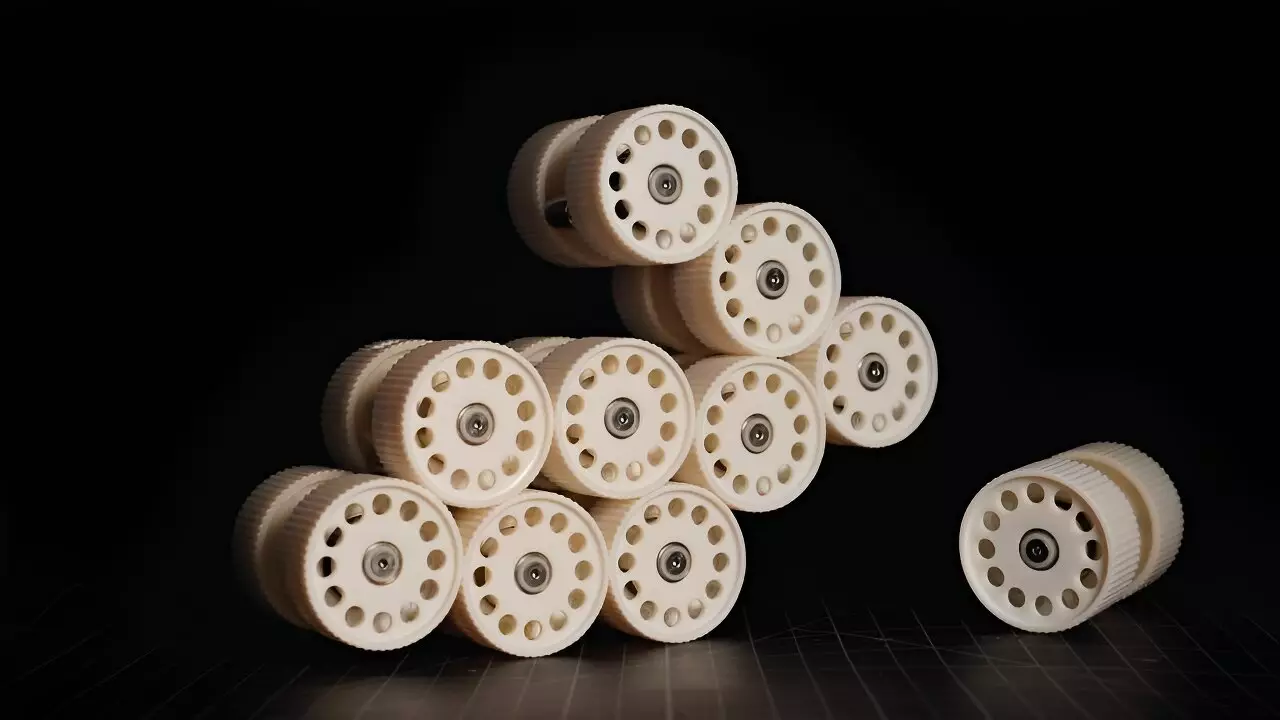Swarming behavior in nature has long fascinated scientists, with schools of fish, colonies of bees, and murmurations of starlings moving in synchronized harmony. This behavior, often likened to a flowing liquid, has caught the attention of physicists like Heinrich Jaeger and Baudouin Saintyves, who have delved into the world of fluid mechanics to develop modular, adaptive robotics. Their latest creation, the “Granulobot,” showcases the intriguing capabilities of swarming robotics, blurring the lines between soft, modular, and swarm robots.
The Granulobot is a collection of simple, cylindrical units, each equipped with two magnets that can rotate around the cylinder’s axis. These units can connect magnetically, push their neighbors, and cause them to spin, mimicking the collective movement of a swarm. This design allows the Granulobot to split apart, reassemble, and reorganize itself to adapt to its environment. Depending on its configuration, it can exhibit behaviors akin to a rigid solid or a flowing liquid, showcasing its versatility and adaptability.
Jaeger emphasizes the importance of soft robotics in applications where robots interact with humans, prioritizing safety and flexibility. A robot’s ability to change shape seamlessly can prove invaluable in scenarios such as search and rescue missions, where navigating challenging terrain and tight spaces is crucial. The Granulobot’s capacity to transition between liquid and solid states, facilitated by jamming phenomena in granular materials, opens up new possibilities for soft robotics in various environments.
Scalability and Potential
While the current Granulobot prototype demonstrates a modular, self-organizing approach, Jaeger envisions future iterations with thousands of units that appear as a singular mass. This scalability hints at the vast potential of the Granulobot concept, from minuscule configurations to larger-than-life structures. The physics principles underlying the Granulobot’s functionality are not constrained by scale or temperature, offering versatility in different environments, including underwater and outer space.
Beyond its applications in robotics, the Granulobot serves as a platform for exploring new frontiers in physics and material science. Jaeger and Saintyves view the Granulobot as a bridge between programmable materials and autonomous robots, highlighting the interconnectedness of energy transfer and self-coordination in complex systems. This interdisciplinary approach not only paves the way for advancements in robotics but also prompts a reevaluation of traditional notions of matter and energy.
The Granulobot represents a groundbreaking development in the field of robotics, showcasing the potential of swarm-inspired designs in creating adaptive, versatile machines. By drawing from fluid mechanics and granular physics, the Granulobot exemplifies the fusion of nature-inspired behavior and cutting-edge technology. As researchers continue to push the boundaries of robotics and physics, the Granulobot stands as a testament to the limitless possibilities of interdisciplinary innovation.


Leave a Reply